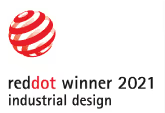Creativity for all
This results from a common (and pesky) myth that creativity is an elusive power reserved for creatives; a personality trait that enables certain people to generate epiphanies like flipping a switch. The truth is, ideas often come from hours of disciplined critical thinking. When I systematically pull from things I have seen or read and implement them in new contexts, I can build something completely original. It is an exercise where designers typically do the heavy-lifting, but I have worked with engineers, attorneys, project managers, and salespeople who significantly contributed to this process.

Where do I find inspiration? Honestly, it comes from everywhere - which is why I strive to be a traveling sponge. Live like a monk for a day at a Buddhist temple in South Korea? Sure! Car-talk and political discourse with Cuban taxi drivers in mid-century Chevys? Count me in! Being open to experiences refills my Creativity tank with insights to approach problems differently. No worries for those not bitten by the travel bug. You can find a wealth of ideas in books, the internet, or even your grocery store - if you pay attention.


When I am back home and working on a client project, my job cannot depend on miraculous ‘Aha!’ moments. I need to come prepared with the right stimulus to get people’s brains churning. One of my favorite techniques is central to the Cross-Pollinator persona popularized by author and IDEO partner, Tom Kelley, in The Ten Faces of Innovation. The Cross-Pollinator makes connections between seemingly unrelated ideas as a tool to activate new thinking. University of Chicago sociologist Ronald Burt corroborates this concept with his term 'Innovation Brokers'. He explains in his article "Structural Holes and Good Ideas":
“People with connections across structural holes [gaps in social networks] have early access to diverse, often contradictory, information and interpretations, which gives them a competitive advantage in seeing and developing good ideas.
...This is not creativity born of genius; it is creativity as an import-export business. An idea mundane in one group can be a valuable insight in another.”
There are many great examples of this in the field of Biomimicry. Velcro was famously inspired by a Swiss engineer who noticed how the hook shape of burrs stuck to his dog’s fur and applied it to textiles. Today, there are multiple teams researching the movement of snakes and applying it to robots that could search and rescue in dangerous terrain. Even the name, Cross-Pollinator, is borrowed from the botanist’s vocabulary.
In the fuzzy front-end of Innovation, when does this technique make the biggest impact? Start by narrowing your scope using a solid problem statement that highlights pain-points of the current experience. Rather than boiling the ocean for inspiration, your challenge statement will prompt the 'what if?' questions that guide divergent brainstorming. It may not be magic, but I still find it amazing how untapped ideas emerge by adding some constraints to the creative process.
Example: You are concerned about increasing water scarcity and want to reduce usage in the home. What if you lived in a world where showers are no longer available -how do you clean yourself? Think of things that you have seen in the past that ‘clean’ themselves. Lizards occasionally shed their old skin as they grow. Self-cleaning ovens burn off food spills. Cats use their sandpaper tongues to clean their fur. Can we apply any of these principles to a personal cleaning device or product? At this point we are looking for quantity, so leave your judgements for later.
Looking for a shortcut to cross-category inspiration? See how Smart Trendboards can be incorporated into your team’s cross-pollination workflow during our live webinar on September 14th, 2017 at 1pm EST. We will be walking through an example that can be used for groups spread across time zones or sitting in the same room.

As designers, we are compulsively scanning the market for inspiration so we can build image boards that will inform our work. It is a natural part of our process that is key to our success, so we have decided to highlight it on our "Design Thinking" graphic.
During the stakeholder research and need statement development phases, the project focus is still somewhat nebulous. We believe that once the need statement and provocative challenge statements have been created, the strategic focus is narrow enough to provide a new lens through which to see the broader world. This is when good cross-pollinators make the biggest impact looking outwardly or inwardly for inspiration that can fuel an amazing ideation session.



